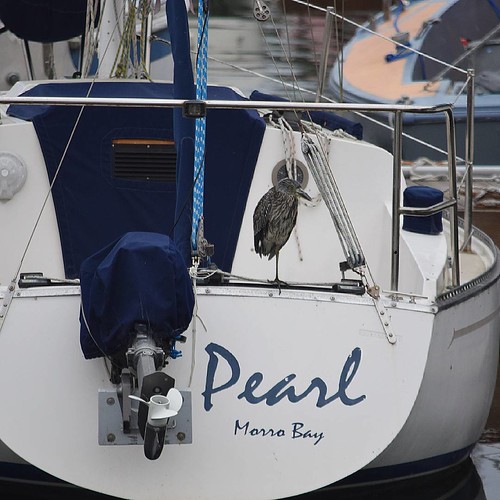CCSP lineage-marked cells don’t contribute to alveolar epithelia in the course of improvement, suggesting that BASCs don’t play an important role in sustaining alveolar cell forms during steady-state homeostatic conditions. Furthermore, she referenced these research demonstrating that CCSPpositive cells can’t give rise to alveolar lineages right after remedy with hyperoxia. She verified that her group does not observe a BASC response to hyperoxia treatment. On the other hand, she hypothesized that BASCs play a important function inside the response of adult lungs to certain contexts of bronchiolar and alveolar injury, for example the naphthalene and bleomycin response. To additional test this hypothesis, her group applied CCSPCreER;LSL-YFP mice and performed lineage tracing studies with bleomycin therapy. Importantly and in contrast to the Hogan Laboratory hyperoxia results, Kim has determined that there’s a significance raise in CCSP lineagetagged cells in the alveolar space soon after bleomycin remedy (Kim Lab, unpublished). This can be consistent with her hypothesis that BASCs are capable of differentiation to alveolar epithelia in vivo in specific contexts. Alternatively, the information could also indicate Club cells have this capacity. To distinguish among PubMed ID:http://www.ncbi.nlm.nih.gov/pubmed/23326564?dopt=Abstract these possibilities, it will be essential to obtain BASC-specific genetic marking in vivo. Dr. Kim also described her identification of a vital new function in adult cells for Bmiin the repression of genes that happen to be ordinarily regulated by imprinting mechanismsExpression of p, Igf, and also other imprinted genes was higher in BASCs compared with AT cells, was necessary for wild-type lung stem cell self-renewal in culture, and correlated with all the potential of stem cells to SVERMONT STEM CELL CONFERENCEeffectively repair broken lung epithelium in vivo.Session : Embryonic Stem Cells, iPSCs, and Lung RegenerationThis session was focused on the improvement of induced pluripotent stem cell lines from regular donors and sufferers with disease to serve as a renewable supply of cells. Moreover to the widely anticipated use of these cells for transplantation or regenerative medicine applications, it was clear that a additional instant influence of iPSC technologies could be the generation of respiratory as well as other lineage cells from typical donors and sufferers with illness to study in vitro. Examples had been supplied for the usage of iPSC-derived respiratory cells to study early human improvement, which includes germ layer and cell lineage commitment, and differentiation. Other studies generated iPSC lines from sufferers with illness to study cellular mechanisms of disease, evaluate gene therapies, and screen drugs, as outlined below for each and every presentation. Within the initially presentation within this session, Dr. Jeffrey Whitsett (Cincinnati Children’s Analysis Foundation) offered an overview of the substantial variety of respiratory PHCCC chemical information problems that could potentially benefit in the development of respiratory cellular repair and regenerative medicine applications within the lung, like bronchopulmonary dysplasia (BPD), COPD, ARDS, cystic fibrosis (CF), and other people. He highlighted the complicated structure and physiology in the lung in the organ and cellular levels, which must be viewed as and understood just before undertaking cell-based regenerative therapies within the lung. Especially, cellular therapies for lung illness would require to make sure repair or normalization of surfactant homeostasis, alveolar apillary integrity, mucociliary  clearance, host defense, normal cell proliferation, dif.CCSP lineage-marked cells do not contribute to alveolar epithelia through development, suggesting that BASCs do not play an important part in maintaining alveolar cell types through steady-state homeostatic conditions. Furthermore, she referenced these studies demonstrating that CCSPpositive cells can not give rise to alveolar lineages immediately after therapy with hyperoxia. She verified that her group does not observe a BASC response to hyperoxia therapy. On the other hand, she hypothesized that BASCs play a essential function inside the response of adult lungs to distinct contexts of bronchiolar and alveolar injury, for instance the naphthalene and bleomycin response. To further test this hypothesis, her group used CCSPCreER;LSL-YFP mice and performed lineage tracing research with bleomycin remedy. Importantly and in contrast to the Hogan Laboratory hyperoxia results, Kim has determined that there’s a significance increase in CCSP lineagetagged cells within the alveolar space soon after bleomycin therapy (Kim Lab, unpublished). This can be constant with her hypothesis that BASCs are capable of differentiation to alveolar epithelia in vivo in particular contexts. Alternatively, the data may possibly also indicate Club cells have this capacity. To distinguish amongst PubMed ID:http://www.ncbi.nlm.nih.gov/pubmed/23326564?dopt=Abstract these possibilities, it will likely be essential to accomplish BASC-specific genetic marking in vivo. Dr. Kim also described her identification of a crucial new role in adult cells for Bmiin the repression of genes which can be commonly regulated by imprinting mechanismsExpression of p, Igf, along with other imprinted genes was greater in BASCs compared with AT cells, was required for wild-type lung stem cell self-renewal in culture, and correlated with the capability of stem cells to SVERMONT STEM CELL CONFERENCEeffectively repair damaged lung epithelium in vivo.Session : Embryonic Stem Cells, iPSCs, and Lung RegenerationThis session was focused on the development of induced pluripotent stem cell lines from standard donors and patients with illness to serve as a renewable supply of cells. Also to the widely anticipated use of these cells for transplantation or regenerative medicine applications, it was clear that a more instant effect of iPSC technologies may be the generation of respiratory and other lineage cells from normal donors and individuals with disease to study in vitro. Examples were supplied for the usage of iPSC-derived respiratory cells to study early human development, such as germ layer and cell lineage commitment,
clearance, host defense, normal cell proliferation, dif.CCSP lineage-marked cells do not contribute to alveolar epithelia through development, suggesting that BASCs do not play an important part in maintaining alveolar cell types through steady-state homeostatic conditions. Furthermore, she referenced these studies demonstrating that CCSPpositive cells can not give rise to alveolar lineages immediately after therapy with hyperoxia. She verified that her group does not observe a BASC response to hyperoxia therapy. On the other hand, she hypothesized that BASCs play a essential function inside the response of adult lungs to distinct contexts of bronchiolar and alveolar injury, for instance the naphthalene and bleomycin response. To further test this hypothesis, her group used CCSPCreER;LSL-YFP mice and performed lineage tracing research with bleomycin remedy. Importantly and in contrast to the Hogan Laboratory hyperoxia results, Kim has determined that there’s a significance increase in CCSP lineagetagged cells within the alveolar space soon after bleomycin therapy (Kim Lab, unpublished). This can be constant with her hypothesis that BASCs are capable of differentiation to alveolar epithelia in vivo in particular contexts. Alternatively, the data may possibly also indicate Club cells have this capacity. To distinguish amongst PubMed ID:http://www.ncbi.nlm.nih.gov/pubmed/23326564?dopt=Abstract these possibilities, it will likely be essential to accomplish BASC-specific genetic marking in vivo. Dr. Kim also described her identification of a crucial new role in adult cells for Bmiin the repression of genes which can be commonly regulated by imprinting mechanismsExpression of p, Igf, along with other imprinted genes was greater in BASCs compared with AT cells, was required for wild-type lung stem cell self-renewal in culture, and correlated with the capability of stem cells to SVERMONT STEM CELL CONFERENCEeffectively repair damaged lung epithelium in vivo.Session : Embryonic Stem Cells, iPSCs, and Lung RegenerationThis session was focused on the development of induced pluripotent stem cell lines from standard donors and patients with illness to serve as a renewable supply of cells. Also to the widely anticipated use of these cells for transplantation or regenerative medicine applications, it was clear that a more instant effect of iPSC technologies may be the generation of respiratory and other lineage cells from normal donors and individuals with disease to study in vitro. Examples were supplied for the usage of iPSC-derived respiratory cells to study early human development, such as germ layer and cell lineage commitment,  and differentiation. Other studies generated iPSC lines from sufferers with disease to study cellular mechanisms of illness, evaluate gene therapies, and screen drugs, as outlined under for every presentation. Inside the initial presentation within this session, Dr. Jeffrey Whitsett (Cincinnati Children’s Research Foundation) supplied an overview of the big number of respiratory problems that could potentially benefit in the development of respiratory cellular repair and regenerative medicine applications inside the lung, which includes bronchopulmonary dysplasia (BPD), COPD, ARDS, cystic fibrosis (CF), and other individuals. He highlighted the complicated structure and physiology of the lung at the organ and cellular levels, which must be LJI308 site regarded and understood ahead of undertaking cell-based regenerative therapies in the lung. Specifically, cellular therapies for lung illness would will need to ensure repair or normalization of surfactant homeostasis, alveolar apillary integrity, mucociliary clearance, host defense, typical cell proliferation, dif.
and differentiation. Other studies generated iPSC lines from sufferers with disease to study cellular mechanisms of illness, evaluate gene therapies, and screen drugs, as outlined under for every presentation. Inside the initial presentation within this session, Dr. Jeffrey Whitsett (Cincinnati Children’s Research Foundation) supplied an overview of the big number of respiratory problems that could potentially benefit in the development of respiratory cellular repair and regenerative medicine applications inside the lung, which includes bronchopulmonary dysplasia (BPD), COPD, ARDS, cystic fibrosis (CF), and other individuals. He highlighted the complicated structure and physiology of the lung at the organ and cellular levels, which must be LJI308 site regarded and understood ahead of undertaking cell-based regenerative therapies in the lung. Specifically, cellular therapies for lung illness would will need to ensure repair or normalization of surfactant homeostasis, alveolar apillary integrity, mucociliary clearance, host defense, typical cell proliferation, dif.
